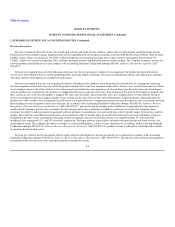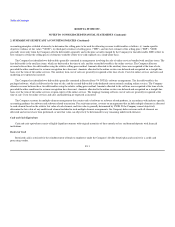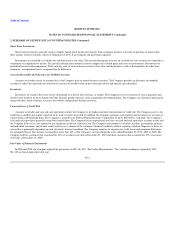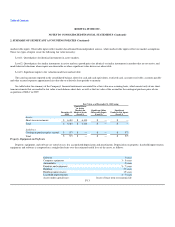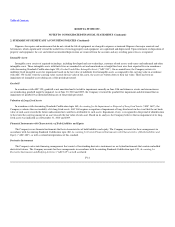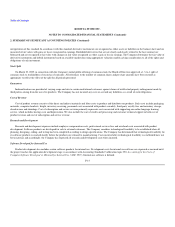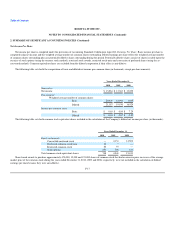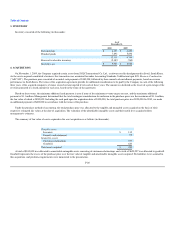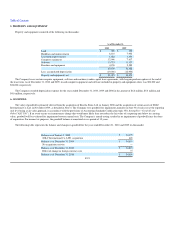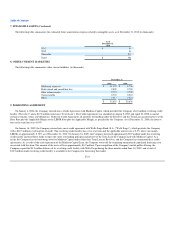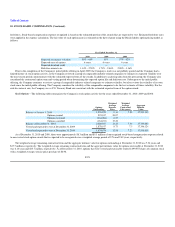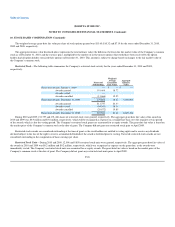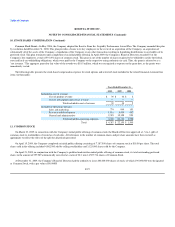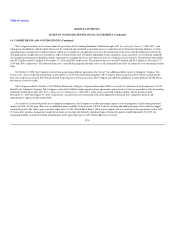Rosetta Stone 2010 Annual Report Download - page 93
Download and view the complete annual report
Please find page 93 of the 2010 Rosetta Stone annual report below. You can navigate through the pages in the report by either clicking on the pages listed below, or by using the keyword search tool below to find specific information within the annual report.
Table of Contents
2. SUMMARY OF SIGNIFICANT ACCOUNTING POLICIES (Continued)
Gains and losses resulting from foreign currency transactions are included in other income and expense. Foreign currency transaction gains (losses) were
$(0.2) million, $(44,000) and $0.2 million for the years ended December 31, 2010, 2009 and 2008, respectively.
Recently Issued Accounting Standards
In December 2009, the Financial Accounting Standards Board ("FASB") issued Accounting Standards Update ("ASU") No. 2009-17, "Consolidations
(Topic 810)—Improvements to Financial Reporting by Enterprises Involved with Variable Interest Entities." ASU No. 2009-17 changes how a reporting
entity determines when an entity that is insufficiently capitalized or is not controlled through voting (or similar rights) should be consolidated. The
determination of whether a reporting entity is required to consolidate another entity is based on, among other things, the other entity's purpose and design and
the reporting entity's ability to direct the activities of the other entity that most significantly impact the other entity's economic performance. ASU
No. 2009-17 requires a reporting entity to provide additional disclosures about its involvement with variable interest entities and any significant changes in
risk exposure due to that involvement. A reporting entity is required to disclose how its involvement with a variable interest entity affects the reporting entity's
financial statements. ASU No. 2009-17 is effective for fiscal years beginning after November 15, 2009, and interim periods within those fiscal years. The
Company adopted ASU No. 2009-17 as of January 1, 2010, and its application had no impact on its consolidated financial statements.
In October 2009, the FASB issued ASU No. 2009-13, "Revenue Recognition (Topic 605)—Multiple-Deliverable Revenue Arrangements." ASU
No. 2009-13 addresses the accounting for multiple-deliverable arrangements to enable vendors to account for products or services (deliverables) separately
rather than as a combined unit. ASU No. 2009-13 permits prospective or retrospective adoption. The Company elected prospective adoption during the
quarter ended March 31, 2010. Under the historical accounting principles, the Company was required to account for online services bundled with auxiliary
items, such as headsets and audio companions, using the residual method or by treating the arrangements as one unit of accounting. ASU No. 2009-13
requires the Company to account for the sale of online services bundled with auxiliary items as two deliverables. The first deliverable is the auxiliary items
which are delivered at the time of sale, and the second deliverable is the online services. This results in the recognition of a portion of the revenue from the
sales of online services bundled with auxiliary items at time of sale. The Company adopted ASU No. 2009-13 as of January 1, 2010, and its application did
not have a material impact on its consolidated financial statements.
In October 2009, the FASB issued ASU 2009-14 which amended the accounting requirements under the Software Topic, ASC 985-605 Revenue
Recognition. The objective of this update is to address the accounting for revenue arrangements that contain tangible products and software. Specifically,
products that contain software that is "more than incidental" to the product as a whole will be removed from the scope of ASC subtopic 985-605 (previously
AICPA Statement of Position 97-2). The amendments align the accounting for these revenue transaction types with the amendments under ASU 2009-13
mentioned above. The guidance provided within ASU 2009-14 is effective for fiscal years beginning on or after June 15, 2010 and allows for either
prospective or retrospective application, with early adoption permitted. The Company adopted ASU No. 2009-14 as of January 1, 2010, and its application did
not have a material impact on its consolidated financial statements.
F-19


